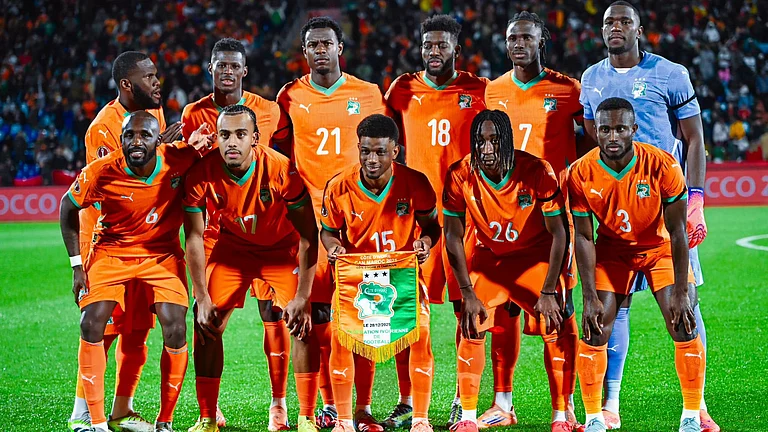—Michael Dibdin, Dead Lagoon.
WHO are we? We know who we are only when we know who we are not and more importantly when we know whom we a re against. This, in brief, is the viscera of Samuel Huntington's long-awaited tour de force , The Clash of Civilisations. The book is, in fact, a detailed version of his article The Clash of Civilisations? which appeared in Foreign Affairs in 1993.
As the embers of the Cold War die down, persuasive theories have emerged to view the new world order. Amongst the leading theorists are Robert Keohane, Francis Fukuyama and Samuel Huntington who have provided new periscopes to view the bewildering terrain, strewn with the litter of the Cold War. While Fukuyama proclaimed history itself had ended, Huntington, in a far more incisive and cogent seminal thesis, argues that the future battles among nations would be fought across the fault lines of civilisations.
Huntington's basic thesis may be summed up thus: the post-Cold War world comprises seven or eight major civilisations whose cultural commonalities and differences shape the interests, antagonisms and associations of states. The most important countries in the world come overwhelmingly from diff e rent civilisations— Islamic, Hindu, Western or Confucian. The predominant patterns of political and economic development differ among civilisations and the key issues on the international agenda involve these very differences. Further, the world is currently witnessing an era where power is shifting from western to non-western civilisations and as such global politics has become multipolar and multicivilisational. So, concludes Huntington: "In the emerging era, clashes of civilisations are the greatest threat to world peace, and an international order based on civilisations is the surest safeguard against world war."
Huntington's thesis differs inasmuch as it does not put all of western civilisation on a pedestal. According to him, western civilisation is certainly unique but not necessarily universal. Echoing Joseph Nye's thesis of soft and hard powers of western states, he argues that while the West did have many traits of a mature civilisation, it was showing distinct signs of decay. Thus, argues the writer, those who promote the universal features of one civilisation are actually only talking of its uniqueness and there is no greater guarantee for a secure world order, other than to renounce the universal.
Indeed, one of the most striking events of the present century is the East Asian miracle, in which countries have emerged from virtual nothingness to build prosperous and strong economies and succeeded in eliminating poverty within the lifespan of a generation. This success is attributed to Confucian values of discipline, parental and societal authority and placing the society above self. This has led many to ask if the present era will witness the ascent of such values and the eclipse of western ones of individualism and freedom.
The events of the recent past offer ample testimony to Huntington's powerful paradigm. The intense fighting in erstwhile Yugoslavia, the new German legislation placing severe restrictions on the entry of immigrants, strifetorn Central Asian republics where almost all battles are being fought on kinship and culture lines— all are contemporary examples which can substantiate the principal hypothesis of the book.
The basic purpose of any paradigm, as Thomas Kuhn taught us in his classic, The Structure of Scientific Revolutions, is not whether it manages to explain each and every fact it is confronted with but as to whether it is a superior tool than its competitor to explain different aspects of reality, causal relationships among diff e rent phenomena, distinguish the important from the unimportant, anticipate future developments and give a flavour of the paths to and the nature of future goals. Measured by this touchstone, Huntington's thesis is certainly a cut above most others of its genre. But it fails in certain crucial respects. The biggest lacuna in the book is its treatment of Hinduism, unarguably one of the greatest civilisations that ever existed in the world, which is barely touched upon. How can a book, which professes to provide a new tool for understanding the post-Cold War era ignore this civilisation? Further, his conclusions for the future of civilisations are rather simplistic inasmuch as there is nothing to prove that the probability that the projected scenarios would occur is for any concrete reason greater than other competing alternate scenarios. Also, one cannot but suspect that what the thesis has actually done is to reduce the myriad factors shaping international politics to a unicausal one.
Recent history testifies that people across the globe are suddenly rediscovering, nay, reasserting their primordial identities. While the maps of the world were being drawn, no cartographer took into account the mindsets and relationships of people, who were indeed never to be separated completely by them. Living as we are in a world of unprecedented anarchy and unpredictability in politics, the visions of a civilisational clash, offer little succour but a definite understanding for the serious spectator of world affairs.






















